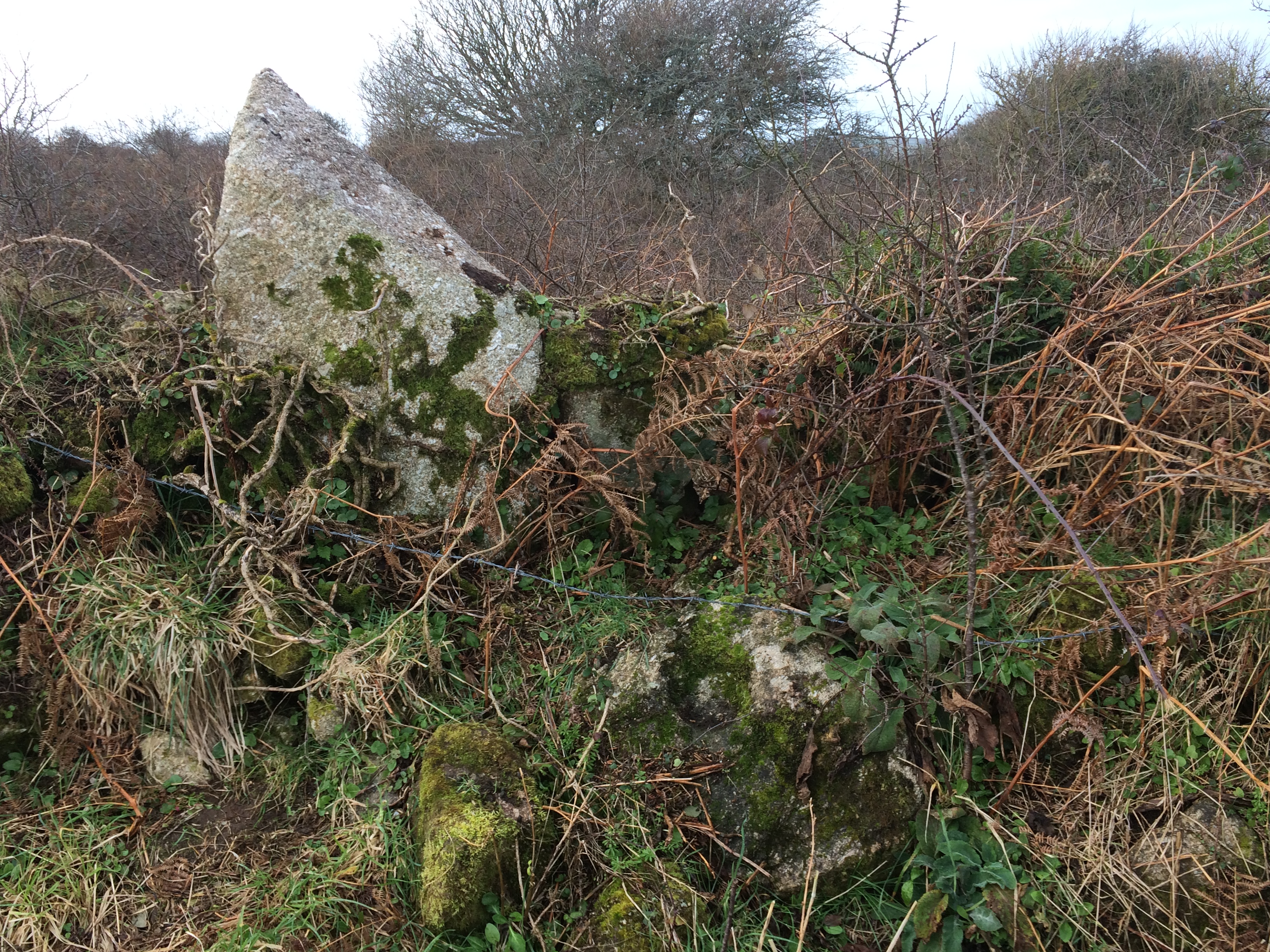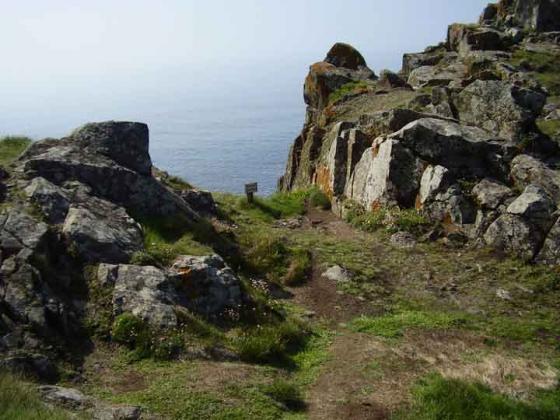
E Bank of Castellack Round.

E Bank of Castellack Round.

Bullaun stone in N Bank of Castallack Round

Castallack Round Dyke Menhir and Bullaun stone in N Bank of Castallack Round.

Interior of Castallack Round viewed from SE.

A view of the interior of the round, looking towards the NE from the entrance gate.
Visited 07.0219
I parked up in Castallack and walked up the muddy bridle path to Castallack Round at SW44852539, at a right angle in the path. The grass in the field was short however there was no sign of a hut circle. On the OS Explorer map the hut circle is just north of the round in an impossibly overgrown area.
At the northern edge of the round this a pointed menhir wedged in the dyke and a Bullaun stone a few feet away. A Bullaun stone is a stone with a deep hemispheric depression which often collects water.
Visited 19.6.09, walking up from Lamorna. The round is approached along a bridleway that runs alongside someone’s holiday let – the guy sitting on the bench eating his sandwich looked a bit taken aback as we walked past him.
The round itself is reached through at gate on the right at a point where the track jinks off to the left. It is a small, circular field, which at this time of year was waist high in grass. It was constructed in the Iron Age – there are a large number of these small circular structures on the West Penwith peninsula.
Sadly the vegetation in the surrounding fields stopped us from visiting the hut circle that lies at the northern end of the round, or the standing stone to the west. Really, it’s just a round field!
Historic England’s website mentions the alternative name of Roundago, so I guess this is the place. It says ‘the round was first depicted on the 1840 Tithe Map when it still had a massive stone outer wall with an entrance to the south and a colonnade of stones which led to an inner circular enclosure. When described by Blight in 1865, the inner enclosure could hardly be traced and the avenue had been removed. However, the ramparts were still massively constructed.‘
Unfortunately, not a few of the hoary remains of an unlettered age have been wilfully or ignorantly destroyed, although some owe their preservation as much to the lasting superstitions of the people as to their remote positions, apart from the haunts of man. The following story will shew that some ojections still remain in the popular mind against interfering with these ancient stones. Farmers find the rude crosses, which are still very numerous in Cornwall, extremely convenient as gate-posts, and to that use many of them have been brought. Such an one set his labourer to sink a pit for a post, but when the pit was finished and the labourer weas told that the cross standing in the field, a little distance off, was to be placed in it, the man absolutely refused to have any hand in the matter; not, be it said, on account of the beautiful or the antique, but for fear of “the old people.”
Another farmer related that he had a neighbour who “haeled down a lot of stwuns called the Roundago, and sold ‘em for building the docks at Penzance. But ne’er a penny of the money he got for ‘em ever prospered, and there wasn’t wan of the hosses that haeled ‘em that lived out the twelve-month; and they do say that some of the stwuns do weep blood, but” --reluctantly-- “I don’t believe that.”
From ‘Cornwall Pre-historic and Present’ by C G Harper in ‘Architecture’ v2, pp176-184 (1897).












































































































































































